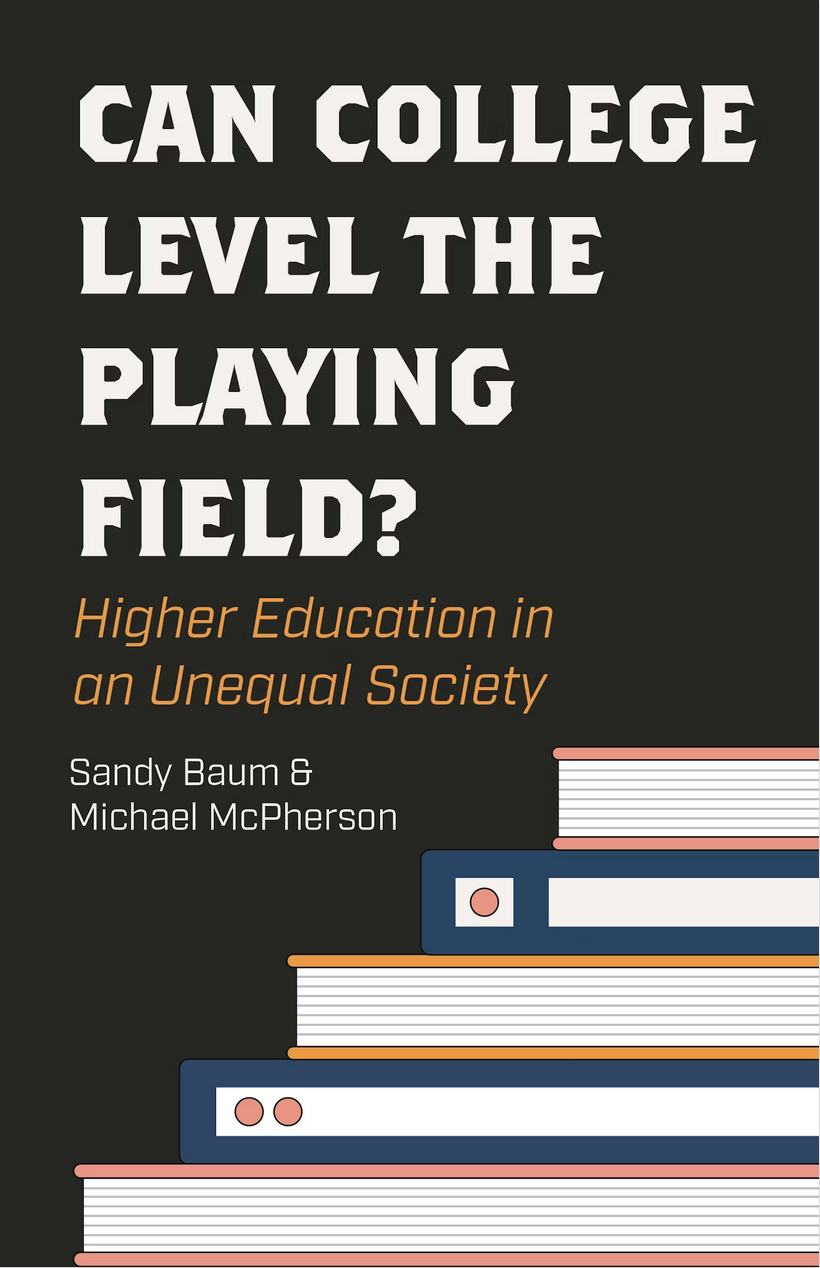Equality of opportunity has been a mainstream policy goal for years now, and it is the ethical horizon of these two arguments—the “level playing field” of Baum and McPherson’s title. But a different mainstream operated in the mid-1960s, one that saw equal opportunity as the means to the end of equal outcomes. That goal appeared in a famous commencement address Lyndon Johnson delivered at Howard University in 1965:
Freedom is the right to share, share fully and equally, in American society—to vote, to hold a job, to enter a public place, to go to school. It is the right to be treated in every part of our national life as a person equal in dignity and promise to all others.
But freedom is not enough. . . . You do not take a person who, for years, has been hobbled by chains and liberate him, bring him up to the starting line of a race and then say, “You are free to compete with all the others,” and still justly believe that you have been completely fair.
Thus it is not enough just to open the gates of opportunity. All our citizens must have the ability to walk through those gates. And this is the next and the more profound stage of the battle for civil rights.
We seek not just freedom but opportunity. We seek not just legal equity but human ability, not just equality as a right and a theory, but equality as a fact, and equality as a result.
Johnson defined equal opportunity as the gateway to equal results. This could not mean that every individual would end up with equal resources, but it did mean that equal outcomes should hold across racial groups. On average, Black students would graduate from high school at roughly the same rates as whites, go on to university at the same rates, get bachelors’ degrees at the same rates, and so on. (The same would be true of indigenous and Latino students—indeed students from any racial group.) With visible and structural inequalities truly undone, Blacks as a group would come to earn, on average, the same as whites in employment after college, and their family wealth would soon become comparable (rather than get stuck at 15 percent of white wealth, where it has lingered for years). A similar line of thought lay behind the Equal Rights Amendment to the Constitution: women should earn the same as men. On this conception, justice entails not the right to compete to be equal—as had been done for centuries—but being equal in fact.
Johnson said the quiet part out loud—the part that Baum, McPherson, and Orfield cannot bring themselves to say even today. The argument of his Howard speech is the only coherent theory of civil rights: if no racial group is innately inferior to another and opportunity is genuinely equally distributed, then we should expect to see equal outcomes across groups. The upshot is that if a social system is producing unequal group outcomes, the only reasonable conclusion is that opportunities are not distributed equally. This is what Johnson was saying. It is what the Black Power movement was saying. And it is what Martin Luther King, Jr., was saying with increasing vehemence from 1965 through 1968 as Johnson and the Democratic Party got cold feet.
The quiet part generally went quiet again as liberals and progressives tried to preserve and extend civil rights gains in the face of vigorous white opposition. But equality is the civil rights logic that any accurate analysis of educational outcomes must reckon with, even while acknowledging the successes and likelihood of backlash. Equal opportunity and equal outcomes are not the same concept, but they are inevitably connected, and the connection was always in view during the height of civil rights enforcement.

